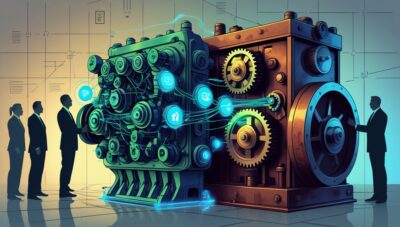The Enterprise of the Future
Do you know what it will look like? More importantly, do you know what role you, the CIO, will play?
Do you know what it will look like? More importantly, do you know what role you, the CIO, will play?
How do you change “Career is Over” to “Careering into Opportunities”?
An interview with Harvey Koeppel, Executive Director, Center for CIO Leadership.

This article explains why e-Business continues to challenge traditional organizations. It explores the historical misplacement of e-Business functions in IT and marketing, the myths that distort strategic thinking, and the urgent need for structural realignment to avoid becoming obsolete.

This article explores the structural shift e-Business requires—from faster, personalized customer experiences to tightly integrated back-end systems. It highlights how customer expectations, short product life cycles, and real-time service pressure organizations to adopt entirely new models rather than repurpose old ones.

This article introduces universal organization design principles and applies them to e-Business. It explains how business models—not best practices—should guide structure, and explores the role of segmentation, customer centricity, and cross-functional integration in building an agile digital organization.

This article breaks down the three dominant e-Business organizational models—centralized, decentralized, and hybrid—evaluating their pros and cons. It provides a practical framework to help businesses select the right structure based on maturity, industry pace, and business model alignment.
<h3>IT Governance Framework: <span class="Apple-style-span" style="font-weight: normal; font-size: 12px; ">This presentation provides a good overview of IT Governance and COBIT and through that provides a connection between the two.</span></h3>
What does the CEO expect of their CIO?
Catalyst for change. Expert on what’s prossible. Guru of risk management. These are some of the many roles CIOs will play in the Enterprise of the Future. What do these new expectations mean to CIOs?